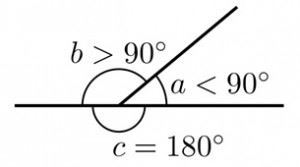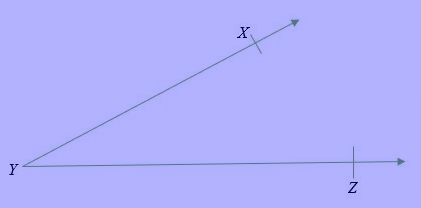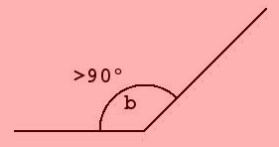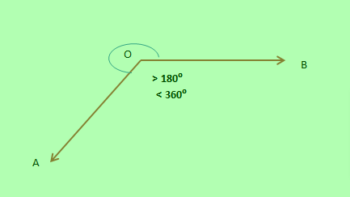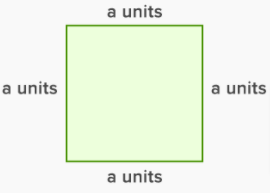Before, going for examples on simplification, know the rules and methods. Check all the best possible methods to solve the simplification of expressions. Refer to all the formulae, rules, and methods for the simplification of integers. You can go through the entire article to know more on what are the rules to be followed while simplifying expressions. Practice the Simplification Questions available and cross-check your answers here to know where you stand in your preparation level.
Rules of Simplification
While solving the Examples on Simplification keep the below pointers in mind. They are as follows
1. Remove Brackets – If two or more signs occur in the expression, then convert them into one. The brackets will be square, round and curly braces.
2. Group the values into one group i.e., either positive or negative.
3. Whenever there are two integers, the result will give the sign of the greater value.
Examples on Simplification
Question 1.
At 135 feet below sea level, a submarine has started. It dives 239 feet before rising 307 feet. Find the exact depth of the submarine at which it is spent currently?
Solution:
As per the given question,
At 135 feet below sea level, a submarine has started
The level at which it dives = 239 feet
The rise of the sea level =307 feet
To find, the current depth of the submarine, we write the equation as
-135+(-239)+307
=-374+307
=-67
Therefore, the current depth of the submarine is 67 feet below sea level.
The final solution is -67 feet.
Question 2:
Jenny purchases a credit card from a local retailer. She begins with a $200 balance. She then makes the following purchases: lamp $8, rug $63, vacuum $39. After this shopping trip, she loads $147 on her card, then spends $113 on groceries. Express each transaction as an integer, then determine the new balance on the prepaid credit card?
Solution:
As per the given question,
Jenny begins with a balance = $200
She purchases lamp = $8
She purchases rug = $63
She purchases vacuum = $39
She loads on her card = $133
As she has the balance of $200, it is positive, and also she loads $147 to her card, therefore it is also positive. The remaining values are negative.
The new balance on the prepaid credit card = 200 +(-8) + (-63) + (-39) + 147 + (-113)
= 347 + (-223)
=124
Therefore, the new balance on the prepaid credit card = $124
Hence, the final solution = $124
Question 3:
Simplify: 37 – [5 + {28 – (19 – 7)}]
Solution:
Step 1: Innermost grouping symbols removal is the first step to simplify the expression. Consider {28-(19-7)}, to remove the brackets we subtract the equation {28-(19-7)}, here comes as {28-12}
The simplified expression is 37 – [5 + {28 – 12}]
Step 2: Follow the same procedure to remove parentheses in {28-12}, we have to subtract the equation {28-12}, here comes the final equation as
37 – [5 + 16]
Step 3: Now, the equation is further simplified and it contains only square brackets, we should perform all the set of operations within two brackets.
37 – 21
Step 4: In the final step, we subtract the values and the final result will be 16.
Thus the final solution will be 16.
Question 4:
Simplify the equation 15 – (-5) {4 – 7 – 3} ÷ [3{5 + (-3) x (-6)}]
Solution:
Step 1: Innermost grouping symbols removal is the first step to simplify the expression. Consider {5+(-3)x(-6)}, to remove the brackets we multiply the equation {5+18}, here comes the final expression as
15 – (-5) {4 – 7 – 3} ÷[3 {5 + 18}]
Step 2: Follow the same procedure to remove parentheses in {4-7-3}, we have multiplied the equation {4-7-3}, here comes the final result as 4-4
After performing 2 steps, the result equation will be
15 – (-5) x 0 ÷[3 {5 + 18}]
Step 3: Next simplification must be the addition of 5 and 18. The result will be
15 – (-5) x 0 ÷ 3 x 23
Step 4: As the brackets of two sets are removed. Therefore, change the negative signs and rewrite the equation.
15 + (5 x 0) ÷ 3 x 23
Step 5: As all other brackets are removed and the expression contains only and braces. Perform all the operations that are possible within the brackets.
= 15 – (-5) x 0 ÷ 69
Step 6: On further simplification, the result will be
15 – (-5) x 0
Step 7:
Therefore, the final solution is 15
Question 5:
The temperature of the fridge compartment is set at 8 degrees C. The freezer compartment is set at -10 degrees C. What is the difference between the temperature settings?
Solution:
As per the given question,
The temperature of fridge compartment = 8 degrees C
Temperature of freezer compartment = -10 degree C
Difference between temperature = 8-(-10)
=8+10
=18 degrees C
Question 6:
Rekha climbs up 5 stairs every second and then climbs down 2 stairs over the next second. How many seconds will she take to climb 60 steps?
Solution:
As per the given question,
Stairs climbed up by Rekha = 5 in 1 sec
Stairs climbed down by Rekha = 2 in 1 sec
Climbing down is considered as a decrease in value, hence it is negative.
Therefore, stairs climbed = 5+(-2) in 2 secs
Steps climbed = 3 stairs in 2 secs
Thus, the time to climb 1 step in time = 2/3 secs
Thus, the time taken to climb 60 steps = 2 x 60/3
= 40sec
Hence, the final solution is 40 sec.
Question 7:
I start with integer (-8), Add (-12) to it, subtract 10 from the result. Divide the result by (+3) and multiply the answer by (-2). What do you get?
Solution:
Step 1: As given in the question, the integer value is -8
Step 2: Adding -12 to the integer value
i.e., -8-12=-20
Step 3: Subtracting 10 from the value = -20-(10) = -30
Step 4: Dividing by +3
=(-30)/(3) = -10
Step 5: Multiply the answer by -2
(-10) x (-2) = 20
Therefore, the final solution is 20
Question 8:
Arnav has $20. He spent $8 on Monday. He got $5 as pocket money on Tuesday. He gave a $7 loan to his friend on Wednesday. He ate ice cream for $10 on Thursday. He received a reward of $5 on Friday. He repaid the loan of $7 on Saturday. How much money did Arnav totally have on Sunday?
Solution:
As per the given question,
Arnav has $20
He spent on Monday = $8
He got pocket money on Tuesday = $5
He gave a loan to a friend on Wednesday = $7
He ate ice cream on Thursday = $10
Received a reward on Friday = $5
His friend repay the loan on Saturday = $7
Money Arnav has on Sunday = 20+(-8)+5(-7)+(-10)+5+7
=20+5+5+7+(-8)+(-7)+(-10)
=37-8-7-10
=37-25
=12
Therefore, the money Arnav has on Sunday = $12
Question 9:
A Hiker is descending 152m in 8 minutes. What will be his elevation in half an hour?
Solution:
As given in the question,
In 8 mins Hiker descends 152cm.
In 1 min Hiker descends = 152/8 = 19m
Therefore, In 30min Hiker descends = 19 x 30 = 570m
Hence, the final solution is 570m
Question 10:
In an exam, the student gets +4 for each correct answer and -2 for each wrong answer. Rohith’s final score is 68 marks and he attempted 25 questions correctly. How many marks did he lose for wrong answers?
Solution:
Rohith’s final score = 68 marks
Rohith attempted correctly = 25 questions
Let the number of wrong answers be a
Marks for correct answers = 25 x 4 = 100
Marks for wrong answers = a x (-2) = -2a
Total wrong answers = 100 +(-2a) = 68
100-2a=68
-2a=68-100
-2a=-32
a=32/2
a=16
Therefore, Rohith lost 16 marks for wrong answers.
